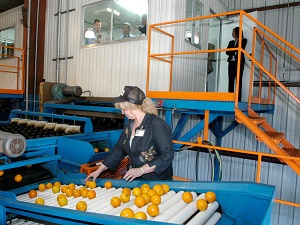Guardrails are critical to help prevent fall incidents, but they must be constructed properly and according to the strict OSHA standards set up for guardrails.
Proper guardrails are an essential requirement for safety on many job sites. Obviously it's not enough to just expect workers to "not get too close to the edge". OSHA has a lot of standards pertaining to guardrails for a reason. They are there to protect workers at heights as well as workers, pedestrians and property on the ground.
Guardrails must be constructed properly. They must be able to stand up to construction use and prevent someone from falling. Damaged or broken guardrails must be repaired or replaced immediately upon discovery. Guardrails must be maintained throughout all phases of work on the site.
OSHA Construction Standard 1926.501(b)(1) Each employee on a walking/working surface (horizontal and vertical surface) with an unprotected side or edge which is 6 feet (1.8 m) or more above a lower level shall be protected from falling by the use of guardrail systems, safety net systems, or personal fall arrest systems.
OSHA General Industry Standard 1910.501(b)(1)(i) Except as provided elsewhere in this section, the employer must ensure that each employee on a walking-working surface with an unprotected side or edge that is 4 feet (1.2 m) or more above a lower level is protected from falling by one or more of the following: Guardrail systems; Safety Net systems; or Personal fall protection systems, such as personal fall arrest, travel restraint, or positioning systems.

Guardrails typically consist of a top rail, a mid rail and a toeboard.
Top rails must be constructed at a height of 42-inches (plus or minus 3-inches) and must be able to withstand 200 lbs. of force downward and outward in the direction of the hazard or fall area.
OSHA Construction Standard 1926.502(b) states that guardrails must have a top rail of 42” high and strong enough to withstand 200lbs of force, mid rails must be 21” high and strong enough to withstand 150lbs of force.
Mid rails must be installed at a height of 21-inches or mid-way between the surface and the top rail, and must be able to withstand 150 lbs. of force.
OSHA Construction Standard 1926.502(j) Toeboards, when used as falling object protection, shall be added along the edge of the overhead walking/working surface… Toeboards shall be capable of withstanding, without failure, a force of at least 50 pounds… Toeboards shall be a minimum of 3 1/2 inches (9 cm) in vertical height from their top edge to the level of the walking/working surface.
Toeboards must be at least 3.5-inches high and designed to withstand 50 lbs. of force. Toeboards are an important part of falling object protection for workers on the lower levels of the construction site.

.jpg)

.jpg)